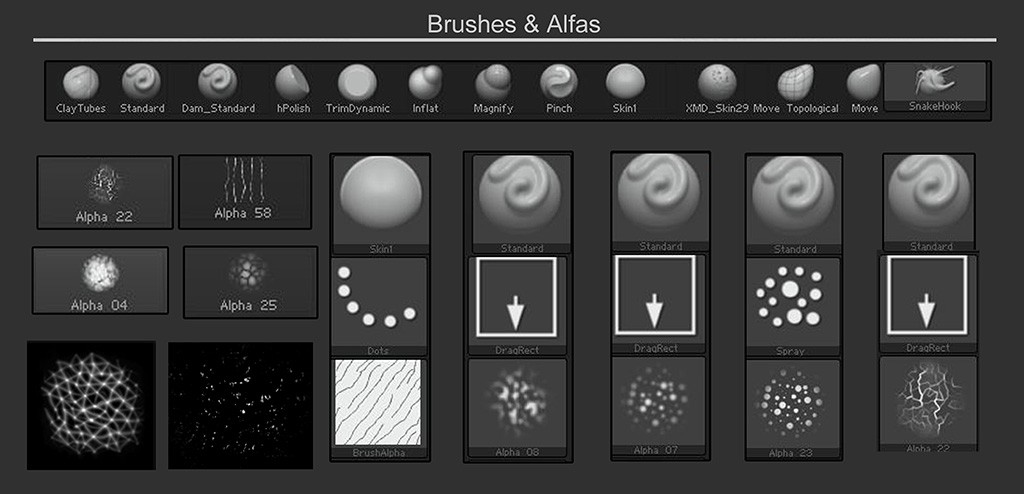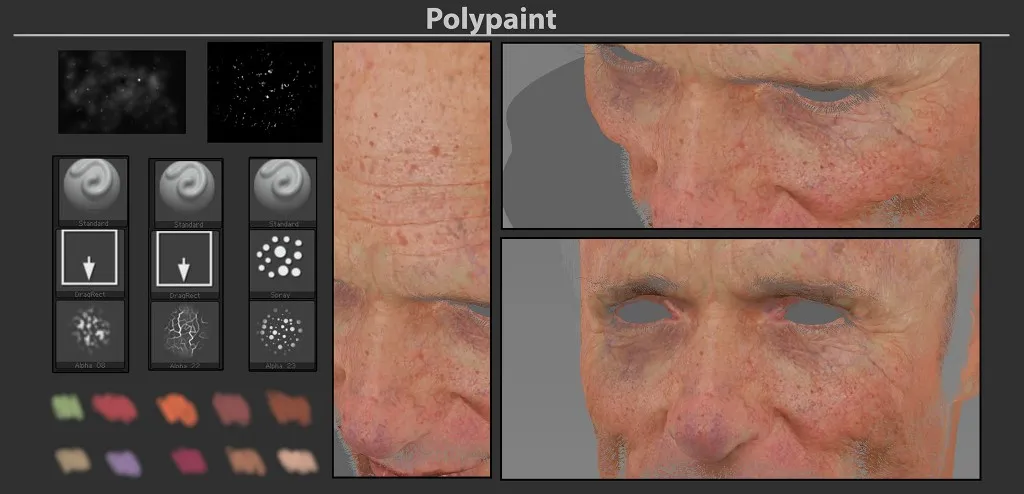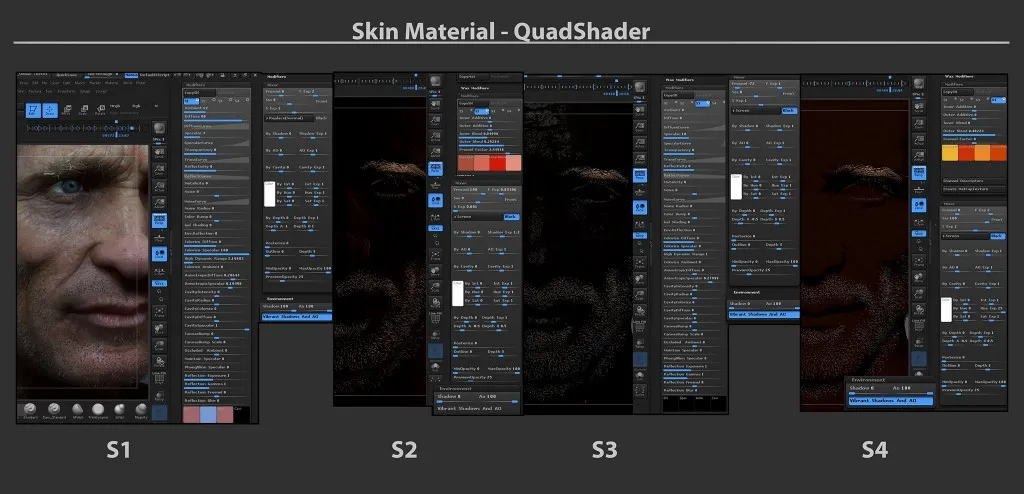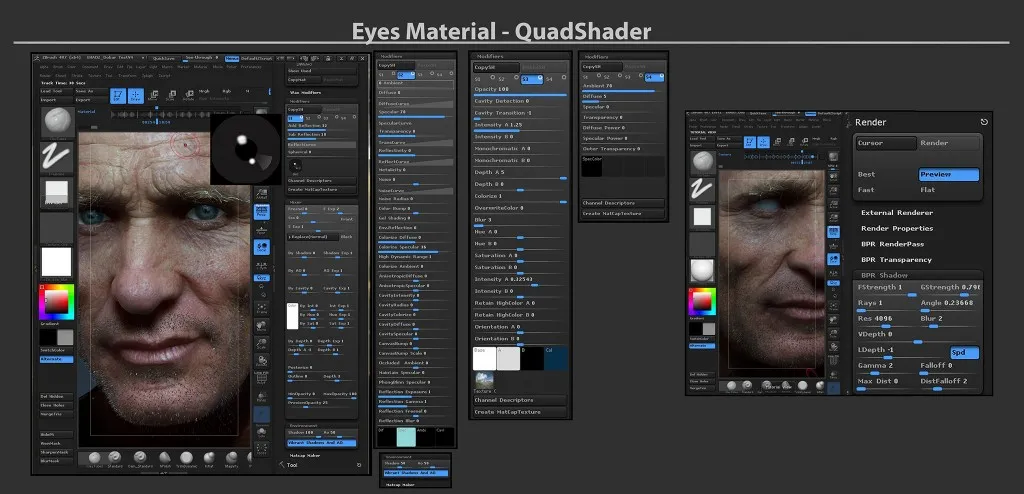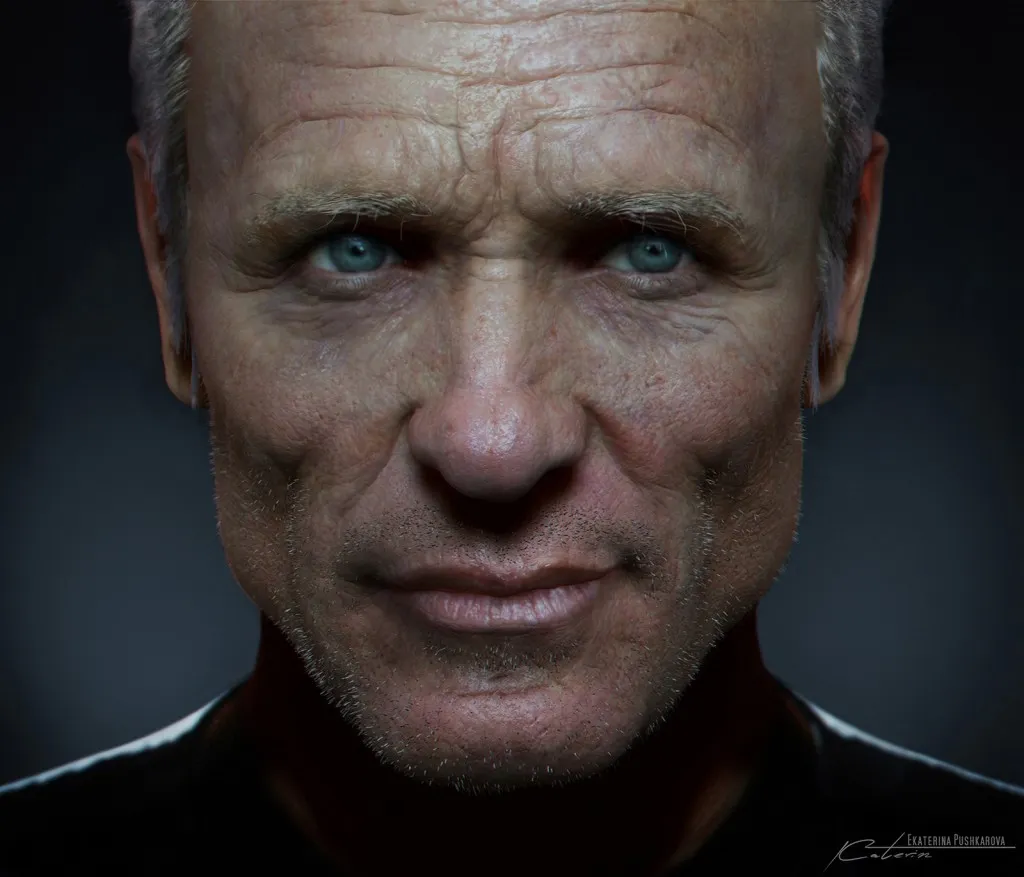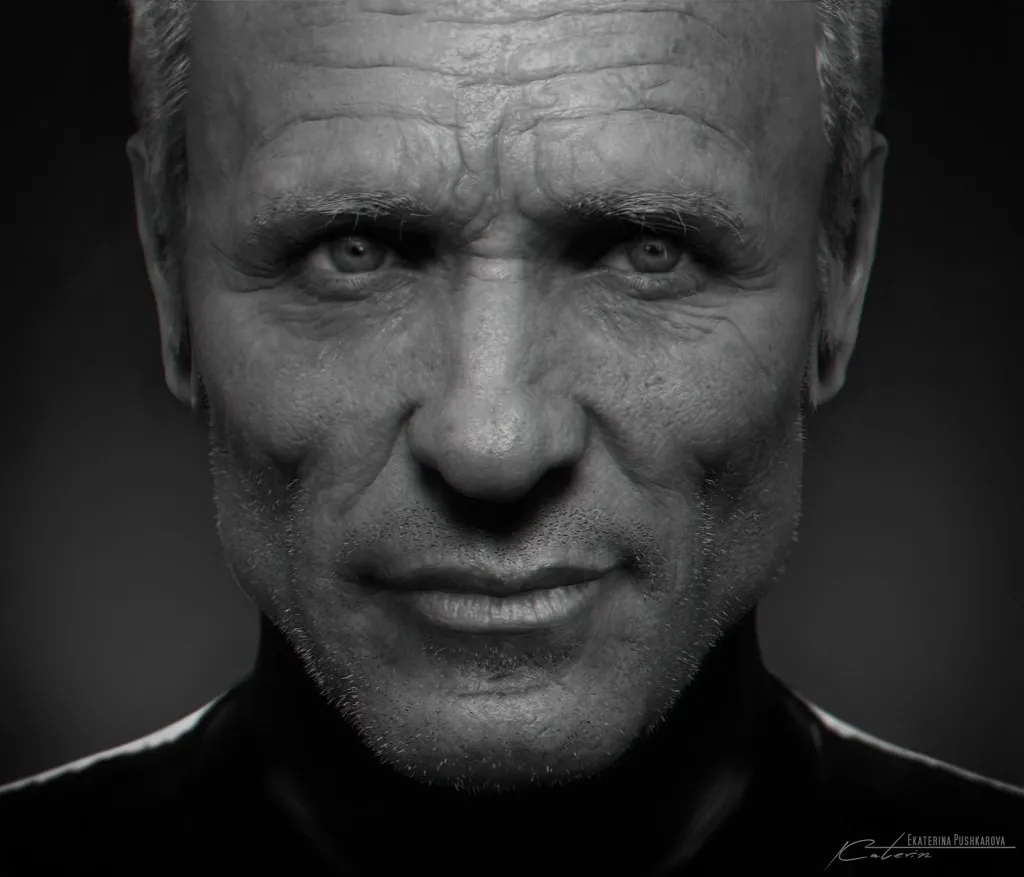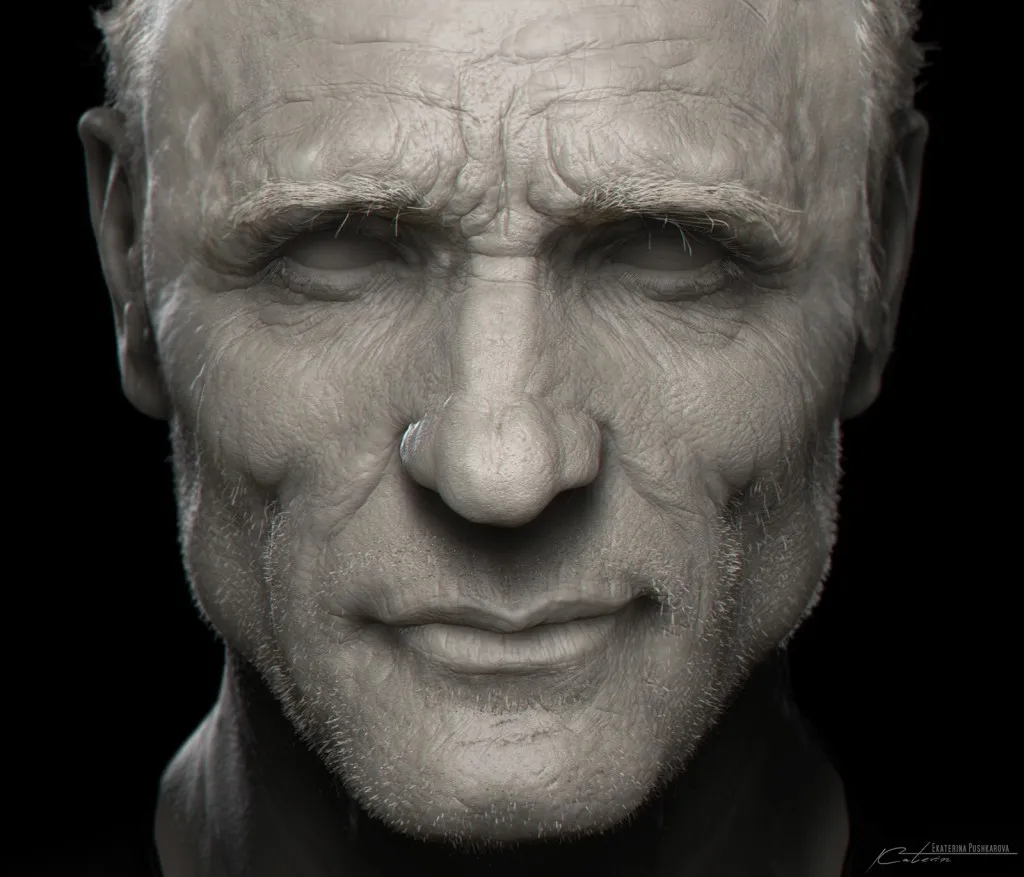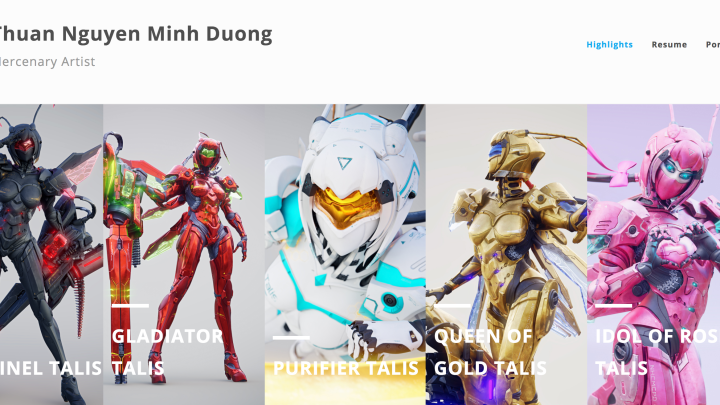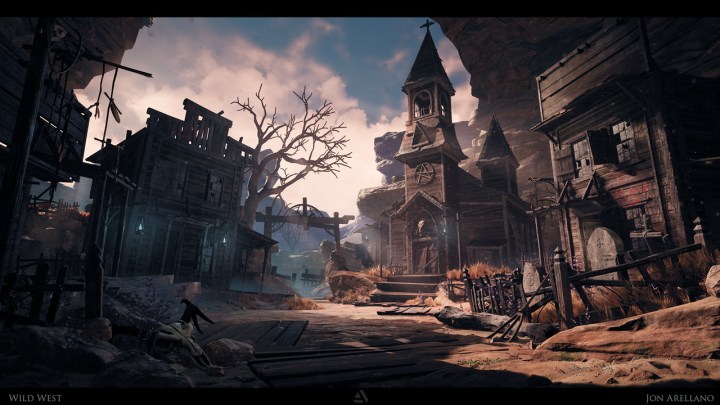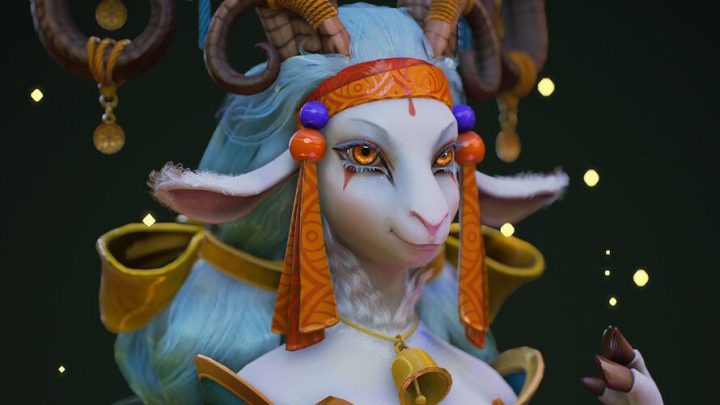Ekaterina Pushkarova: Creating Ed Harris’ likeness in ZBrush
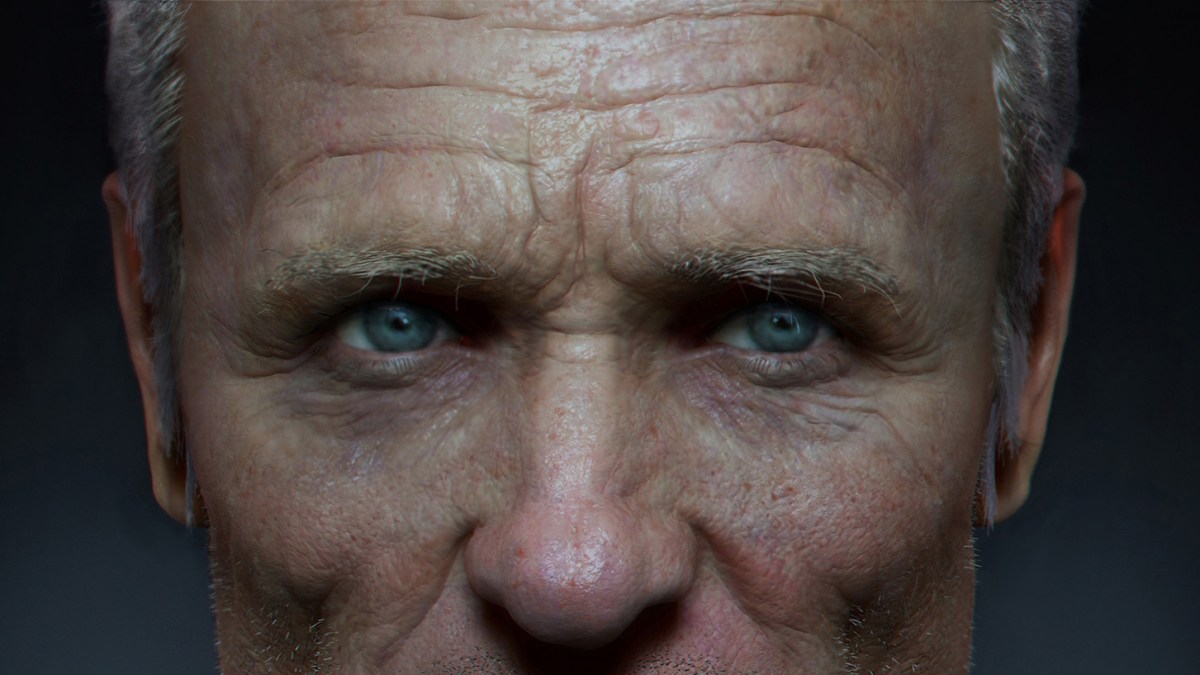
I had the honor to meet Mr. Harris while I was working for the cinema. From the few words we’ve exchanged, nothing’s remained … except the piercing look of his eyes. So that’s how I recreated him… as I remembered him.. He was my reference…
Modeling
On the whole I could say a few general things about ZBrush. Firstly, with the time I’ve been convinced that this programme has everything necessary in its basic brushes, alpha and materials that an artist would need. In the beginning I used mostly ClayTubes for the modelling (a brush quite similar to clay modelling) and after that I blended the forms with SPolish and TrimDynamic. Once the volumes of the face have been completed, there’s always need of blending them so that they won’t work too fragmentally. With ClayTubes I often apply alpha with pores, reduce the intensity and again blend. The main five brushes with which I do the modelling during the whole time are ClayTubes, Standard, Dam_Standard, Inflate, and Magnify. I literally scratch in the wrinkles and fine detail with Dam_Standard, and then I regularly inflate with the Magnify brush. I drag some of the alphas with the Standard brush.
Polypaint
With the texturing I prefer to draw everything manually with the help of a few alphas (mainly veins and spots). When I decide to use a part of the photo texture for the skin for example, I use it always very moderately and lightly, and always with a combination from alpha. I find the excessive use of photographs makes the artwork somewhat predictable. I love the classic painters like Rembrandt and in my opinion the colour of the face, even the slight increase of its pigmentation, when done manually, makes the portrait somehow different and expressive. Important for the texture is the area around the eyes, which shows through the veins and capillaries (blueish), the eye sockets (reddish), the pigmentation of the cheeks and nose (reddish), as well as the chin and the forehead (yellowish).
Materials: QuadShaders
Skin
By using QuadShaders I know that I have quite a good individual control over my materials—especially when searching to achieve an effect with only one pass of the BPR render. Diffuse shader is the first shader S1. Pay close attention to the Anisotropic Diffuse and the Anisotropic Specular shader.
S2 – The effect of the “reddish contour” in the borderline. Inner Blend and Outer Blend and Fresnel Factor are the sliders with which you can experiment until you’ve achieved the desired result. Pay close attention to the Mixer settings!
S3 is the Specular shader. I turn off the Diffuse shader in order to test it better. Anisotropic Specular here is responsible for the spread of the glare. Pay close attention to the Mixer settings! It has to be set on Screen and the button next to it should be active in Black, so that the model won’t look too pale after that.
S4 – SSS – Apart from Outer Blend, pay attention again to the Mixer settings.
Important for all four slots are the Environment settings.
?here are three options there: Shadow, AO and vibrant shadows and AO. Every single one of the shader slots can have different settings, i.e. ways in which it can react to shadow AO. The way in which the work would look once it’s blended.
Eyes
Regarding the eyes, the material is again QuadShaders as there’s some texture done on Photoshop on the first slot and some texture on the third slot from ZBrush default.
Clay
Clay material is the same, but with different texture on the first slot created in Photoshop plus several default Brush materials, and slightly modified in the three additional slots of the shader.
BPR Filters
BPR filters are a quite fast and convenient tool for final image editing without the need to exit ZBrush. Here you could add some noise, blur, color correction and many other filters, just like layers in Photoshop. Further down you can see the specific filters that I’ve used.
As a summary of all said so far I would conclude that the most important thing is experimentation. Just like children—the more they try, the more they learn about the world around them.
Check out more of my work on ArtStation.
